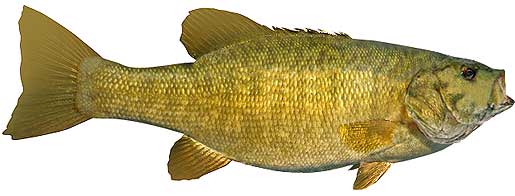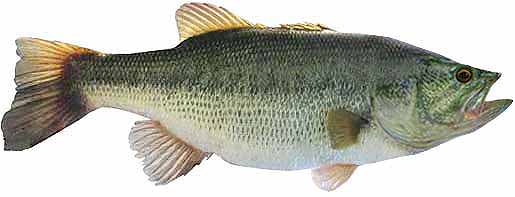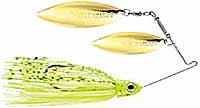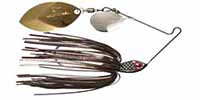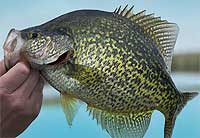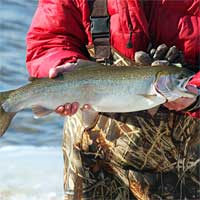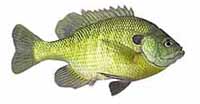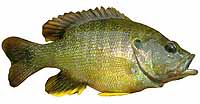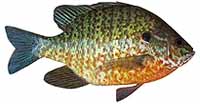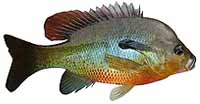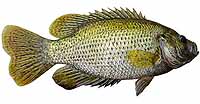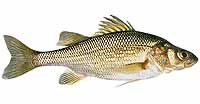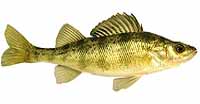Fishing Report For Lake Zoar, CT
By Rick Seaman
September 29, 2025
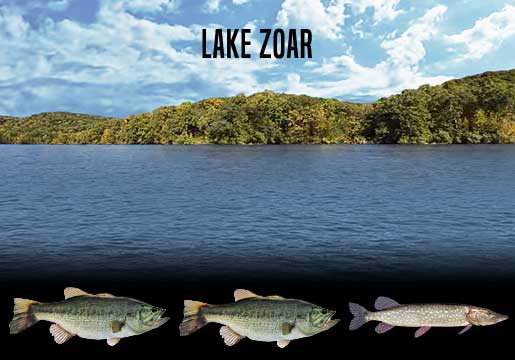
Fishing Reports
Popular Fish Species Lake Zoar, CT
Smallmouth Bass
Current Report: Good To Very Good
FALL. As Fall arrives, smallmouth here follow schools of baitfish into coves and bays 5 to 15 feet deep. This is where jerkbaits, crankbaits, and slow-rolled spinnerbaits, are quite successful. The average smallmouth being caught is only a couple pounds, but 3 to 4 pounders are frequently caught. Fishing shallow for smallmouth is often good on cold, windy, cloudy and rainy days.
WINTER. Winter isolates them around deeper structure, points and creek channels, often suspending in open water above these features. They can generally be found from 20 to 50 feet deep. Here they hold, feeding less frequently, awaiting warmer water to return in Spring.
SPRING. When water temperatures rise into the 50's now, smallmouth have moved from deep wintering spots to shallower water, just outside spawning areas. They feeding heavily in 5 to 8 feet of water at this time, and are typically caught on jerkbaits, crankbaits, tube baits, Ned rigs, and crayfish imitating plastics. Once water warms into the high 50's, they move into shallower water, and create nests in gravel or sand areas, then lay their eggs. Females then move to deeper water and males remain to guard the eggs, and then the fry. After a couple weeks, the males also move to water around 15 feet deep. Crankbaits, tube baits, Ned rigs, plastic worms, spoons and swimbaits are catching smallies during this period.
SUMMER. Smallmouth bass, including a few large ones, begin feeding shallow, early and late in the day, where they are being caught on topwater, crankbaits, swimbaits, Ned rigs and tube baits. Smallmouth bass here feed on crawfish, gizzard shad, and small sunfish. They prefer rocky or gravel bottom areas, as this is where crayfish live. During the hotter parts of the day, they are being caught on points, humps, and ledges 15 to 35 feet deep. Often these deeper fish are part of a large school of smallmouth.
Largemouth Bass
Current Report: Good
FALL. Now that Fall has arrived, bass here are moving shallow and following schools of baitfish into coves and shallow bays into 5 to 15 feet of water. Currently topwater, crankbaits, and slow-rolled spinnerbaits are catching most of the bass. Later in Fall, as deeper water cools, bait and bass move out to ledges, channel edges, points and humps where flutter spoons and jigs are often good choices.
WINTER. Winter will isolate them around slightly deeper structure, flats, points and creek channels. They can be found from 20 to 35 feet deep. Drop shots and jigs are effective in the colder months. Here they hold, feeding less frequently, awaiting warmer water to return in Spring.
SPRING. Once water temperatures rise into the low 60's, largemouth will move from deep wintering holes, to shallower water near spawning areas. Vibrating jigs, jerkbaits and spinnerbaits typically get bites away from the shoreline. At this time they are feeding aggressively and preparing for the spawn. Once water warms into the mid to high 60's, they will move into 2 to 5 feet of water, and create nests, then lay their eggs. Immediately afterwards, females move to deeper water and males remain to guard the eggs, and then the fry. After a couple weeks, the males also move to slightly deeper water. Crankbaits, vibrating jigs, plastic worms and swimbaits are catching bass during this period.
SUMMER. Water temperatures will warm considerably in Summer. Bass will feed shallow, early and late in the day, where they will be caught on topwater, crankbaits and swimbaits. Wacky-rigged stick worms always catch finicky bass when the bite is slow. Largemouth bass here feed on gizzard shad, small sunfish and crawfish. During the hotter parts of the day, they are being caught on points, channel edges, and ledges 10 to 20 feet deep. The best reports seem to be from anglers fishing the steeper banks in the area around the Stevenson Dam.
Northern Pike
Current Report: Very Good
FALL. As the weather is turning cold, water temperatures are cooling fastest in the shallows. This brings baitfish into shallower waters, and northerns follow the food source. They hang around weedbed edges, main-lake points, reefs, and rocky shorelines to ambush prey. This is a prime feeding time as they prepare for winter. It is also a good time to catch a trophy pike.
WINTER. Pike remain semi active in Winter, often congregating in or near remaining weedbeds, especially along the edges. Other structure options include long points, reefs, ledge drop-offs, and rocky humps, ideally nearby deeper water. Ice fishing was good here in winter. At times, when oxygen is depleted in deeper water, northerns suspend directly under the ice, where maximum oxygen is available. Other times they hold on cover or structure in 5 to 10 feet of water, sometimes deeper.
SPRING. After ice out, northern pike migrate to, warmer pockets, bays and coves, 5 to 8 feet deep. Once water temperatures reach around 40 degrees, they move into even shallower areas with vegetation, to spawn. After spawning they linger in the shallow bays for a short period. Once water temperatures rise into the 50's, they move to deeper weedbeds and shallow structures adjacent to even deeper water. Bright colors, whites and flashy lures appeal to these predators. Noisy topwater lures can also produce some spectacular strikes. Alternate between baits until you identify which one triggers the most bites for the day.
SUMMER. Northern pike scatter all around the lake, rather than gather in groups. This makes them more difficult to locate. During the day they are holding from 15 to 20 feet deep, on ledges, reefs, weedbeds, rock piles, islands and channel edges. Some of the larger specimens are suspending in open water, just outside feeding areas. Trolling or drift fishing produces some nice catches, using spoons, big spinners, cut bait, and deep diving crankbaits. Early and late in the day, they move shallower to feed, and can be caught around most weedy shorelines. Noisy topwater lures, spinnerbaits and Johnson spoons with curly-tail grubs, are catching nice pike shallow.
Fishing Video
Fish species to fish for...
Guide to fishing for largemouth bass, smallmouth bass, channel catfish, white catfish, black crappie, walleye, rainbow trout, brook trout, bluegill, green sunfish, pumpkinseed sunfish, redbreast sunfish, rock bass, white perch, yellow perch and northern pike at Lake Zoar in Connecticut.
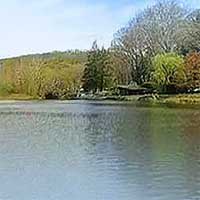
Lake Zoar is a 900-acre lake with 23 miles of shoreline. It is home to healthy populations of bass, catfish, crappie, trout, perch, northern pike and several sunfish species. Fishing from the bank is popular here with easy access via parks and public facilities located around the lake.
Primary fish species to catch
Click images for fishing tips and details about each species.
Today's Weather & Forecast
Public Boat Launch Ramps & Landings
Click here for boat ramps.
Fishing License
Click here for a Connecticut Fishing License.
Map - Fishing & Access
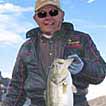
Rick Seaman is a fishing enthusiast with over five decades of fishing experience, a retired tournament fisherman, author of numerous published articles on fishing, and co-author of the book "Bass Fishing - It's not WHAT you throw, It's WHERE you throw it".
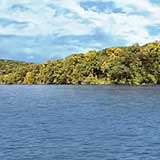
Contact Information
Kettletown State Park Campground
1400 Georges Hill Rd
Southbury, CT 06488
203 264-5678
Fishing lakes in each state
092925
Lake Zoar in Connecticut
CONNECTICUT


Information about fishing lakes in Connecticut
Fishing for bass, catfish, crappie, trout, perch, pike and sunfish, at Lake Zoar, in southwest CT.


